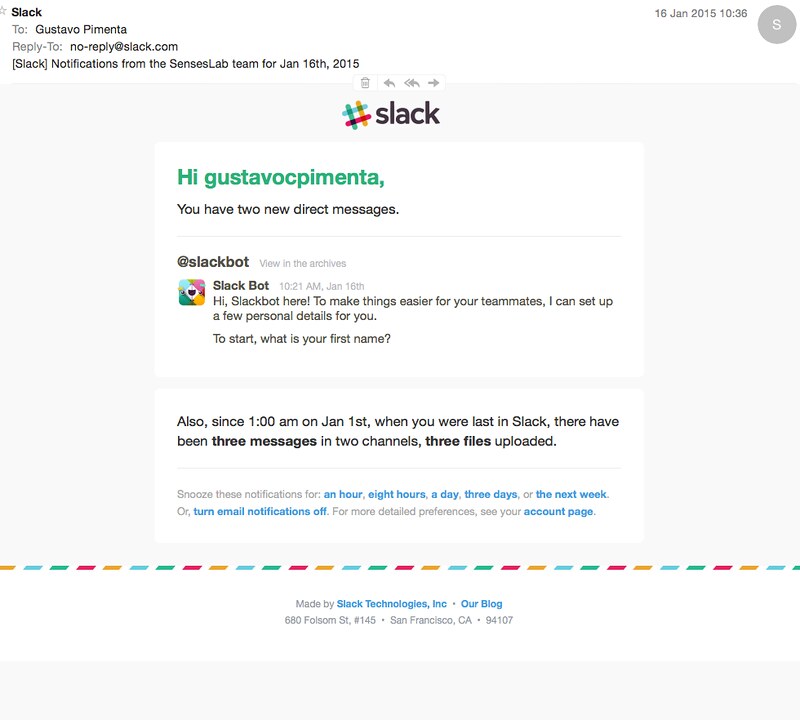
Image Credit: Gustavo da Cunha PimentaFollow
Being an effective manager is a full time job. We rarely have the time to study what is going on within our teams. However, with the arrival of the Covid-19 virus and the increase in working at home, it turns out that perhaps we should start to pay more attention to how the members of our team are interacting. Problems could be brewing and the team messaging platform that you are currently using could be making things worse.
The Problem With Staying In Touch
At this point in time, most companies use some sort of messaging application to allow workers to send text messages to other workers without having to go to the effort of creating a complete email or having to pick up the phone. These popular messaging tools make instant communication across a company simple—one reason that their usage has surged during the pandemic. However, when everyone is working virtually, instant-messaging platforms like the ever present Slack app can become a dumping ground for grievances, passive aggressiveness and other exchanges that are best left for private conversations.
Managers need to realize that one of the downsides to today’s modern messaging platforms is that you can’t have large, nuanced conversations over them. When team members try to use it that way, that’s where you just see it going off the rails. So what should a manager tell their team to do? Simple, have them resolve conflicts and complex issues by picking up the phone or scheduling a video meeting.
So why are we all suddenly using these messaging platforms to communicate? Many companies have embraced Slack and tools like it as a more efficient way to communicate. It turns out that in the first weeks after many companies issued work-from-home orders in March, usage soared: The technology allows workers to swap information in seconds and respond more quickly than in email with emojis and funny videos, making it easy to set an informal tone. Since offices remain closed, such platforms have become virtual water coolers, one of the primary ways homebound staffers stay in touch with each other.
The Downside Of Being Able To Reach Everyone All The Time
Managers need to realize that the benefits that the new messaging platforms provide also come with some downsides. The casual nature of many interactions means some people let their guards down, trash talk and act unprofessionally on the channels. There has been an uptick in harassment complaints related to online communications since people started working at home because of the pandemic. Managers at some companies have had to install tracking tools to police online channels for signs of bullying.
Making sure that these new tools are used correctly is not just a responsibility of managers. The firms that make the tools have to step up also. Slack provides and continues to develop tools for users to control which messages get their attention and let them “reduce noise in Slack”. Like other direct messaging services, Slack has created a more casual type of work communication in which messages and jokes can be taken the wrong way. Managers need to realize that it’s a slippery slope because it’s so informal.
So what should managers do? One thing that they can do is to develop a handbook that includes harassment policies with a section about chat services. At the same time, many managers are leery of being overly restrictive. Chat applications can serve as one of the main outlets for remote employees to raise concerns or share grievances with each other or management. Managers want to avoid passive-aggressive culture, but they also want to be transparent, they want to be authentic.
What All Of This Means For You
The Covid-19 virus has caused just about every workplace to be dramatically changed. Workers who used to come to the office and work side-by-side now work from home. In order to allow these remote workers to communicate with each other better, more and more firms are using messaging platforms to allow workers to easily communicate with each other. However, managers need to realize that as is the case with all forms of new technology, there are downsides to these new messaging platforms.
The problem that managers need to realize is that although the new messaging platforms make communicating easy, they also make it very easy for workers to share their grievances and to become passive aggressive. One drawback to using the new messaging platforms is that it is hard to have a long conversation using them. We are using these new platforms because they make talking with our colleagues so easy to do. It has become so easy to talk to people using the new platforms that some people let their guard down. This is when harassment issues can start to pop up. The manufactures of the platforms realize that there is an issue and they are implementing features to try to prevent it. Managers can take action and clearly communicate to everyone how the messaging platforms are to be used.
The good news is that with the new breed of messaging platforms that just about every firm seems to be using, communication between coworkers has become very easy to do. However, as is the case with every new tool, managers need to be careful because these tools can be misused. It is the responsibility of managers to make sure that these powerful tools are being used correctly by the members of their team.
– Dr. Jim Anderson
Blue Elephant Consulting –
Your Source For Real World IT Management Skills™
Question For You: How can a manager detect if there is a problem with how their team is using a messaging platform?
P.S.: Free subscriptions to The Accidental IT Leader Newsletter are now available. Learn what you need to know to do the job. Subscribe now: Click Here!

